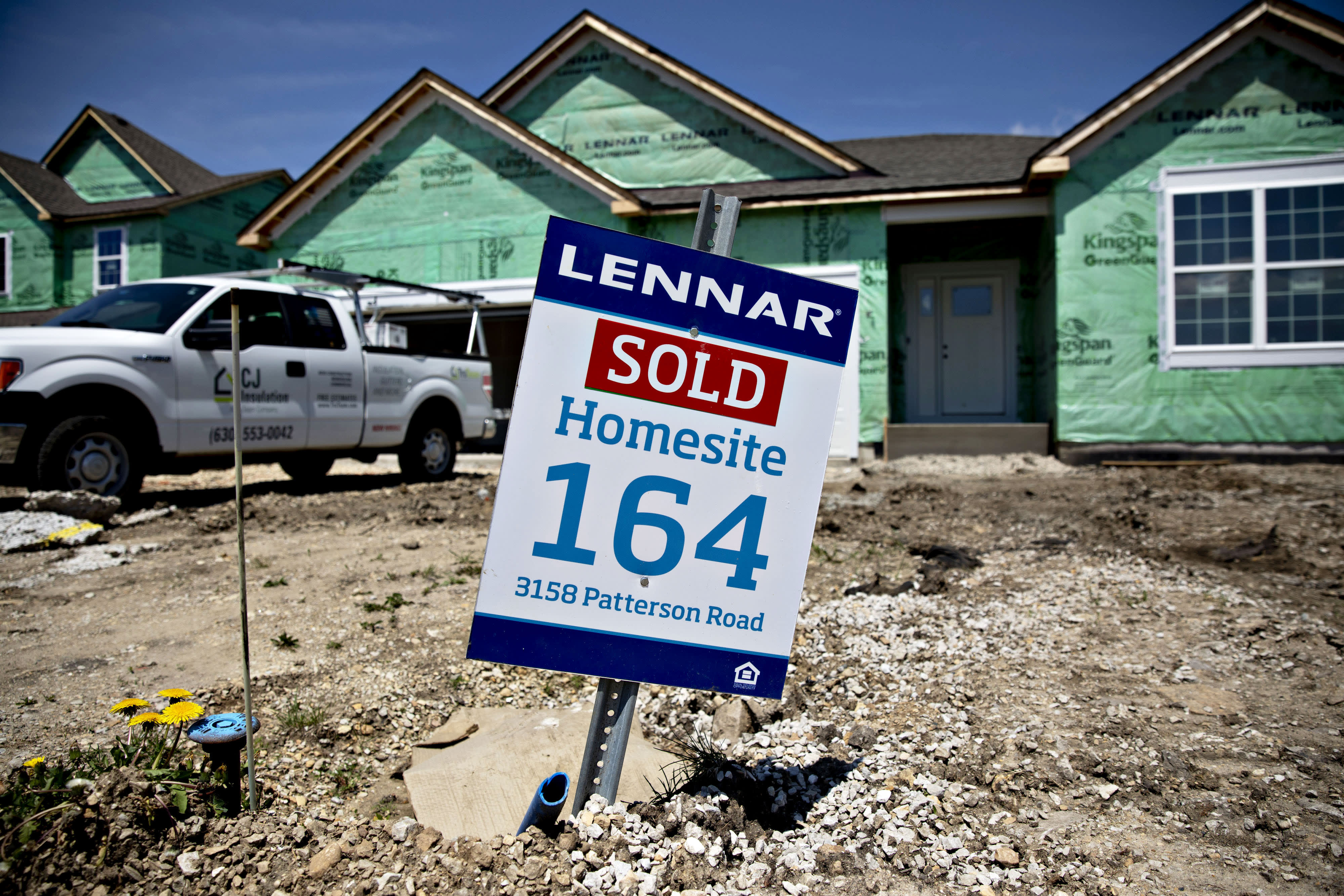Products You May Like
As the broader markets rallied to start the new year Monday, the homebuilding sector sold off. The iShares US Home Construction ETF lost 2.69% on Monday, its worst day since September 30th when it fell 2.89%.
The drop was largely due to a jump in the yield on the 10-year U.S. Treasury, which mortgage rates loosely follow. Investors appeared to be brushing off the omicron variant and consequently pulling out of the relative safety of the bond market. That caused builders to be the outliers in the stock rally.
But builder stocks rebounded on Tuesday, with investors still betting on housing demand despite waning affordability. The homebuilder ETF was up just under 1% in midday trading.
Some the biggest stocks in the sector saw larger gains. PulteGroup rose 1.5% in midday trading while Toll Brothers shares jumped 1.6%.
“We are still in the camp that believes affordability is actually NOT stretched yet (at least by historical standards) – and we see more outsized home price gains ahead in 2022,” said Buck Horne, a homebuilder analyst with Raymond James.
Horne admits that, “there are a fair number of investors we talk to that are still skittish on the group due to affordability concerns. Sharp swings in rates like we saw Monday probably amplified those fears.”
The homebuilders have been the darlings of the pandemic, as demand for housing suddenly soared. The ITB gained 48.6% in 2021, its third positive year in a row and best year since 2017.
Home prices were up 18.1% year over year in November, according to a new read from CoreLogic. That is actually a slight increase in the annual gain from October (18.0%). Some markets, like Phoenix, Las Vegas and San Diego are seeing blockbuster annual gains, at 30.5%, 24.1% and 21.8%respectively.
“Over the past year, we have seen one of the most robust seller’s markets in a generation,” said Frank Martell, president and CEO of CoreLogic. “While increased interest rates may help cool down homebuying activity, we expect 2022 to be another strong year with continuing upward price growth.”
Pending home sales, measured by signed contracts, in November slid slightly, according to the National Association of Realtors, but the Realtors blamed low supply more than high prices.
“While I expect neither a price reduction, nor another year of record-pace price gains, the market will see more inventory in 2022 and that will help some consumers with affordability,” said Lawrence Yun, chief economist for the NAR.
Median-priced single-family homes were less affordable at the end of 2021 compared with historical averages in just over three quarters of the nation, according to a report from ATTOM, a real estate data and analytics firm. That’s up from just 39% percent of the nation’s counties that were historically less affordable in the fourth quarter of 2020, and the highest level in 13 years.
While most analysts claim the housing market is still affordable overall, given wage growth and the recent rise in the savings rate, the amount of income spent on housing is rising fast. At some point, lenders will be less likely to offer some borrowers loans if the debt-to-income numbers get too risky.
“The average wage earner can still afford the typical home across the United States, but the financial comfort zone continues shrinking as home prices keep soaring and mortgage rates tick upward,” said Todd Teta, chief product officer with ATTOM.
